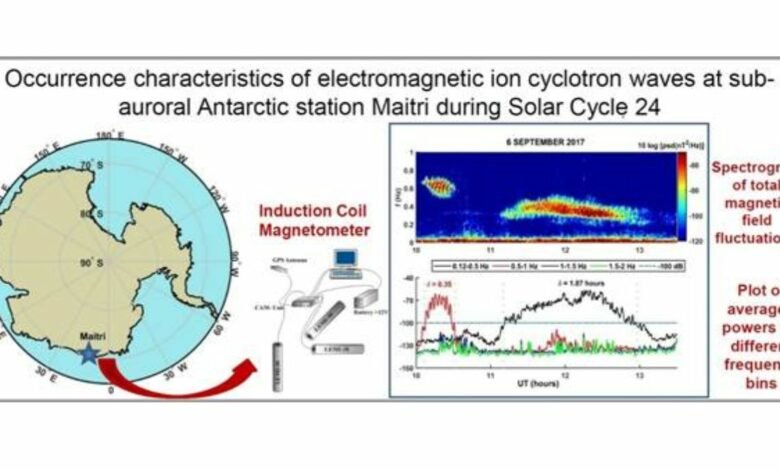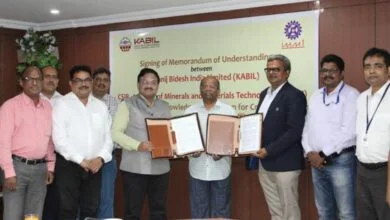Scientists probe characteristics of a form of plasma wave identified in the Indian Antarctic station, Maitri

Scientists have identified Electromagnetic Ion Cyclotron (EMIC) waves, a form of plasma waves in the Indian Antarctic station, Maitri, and studied its characteristics. These waves play an important role in the precipitation of killer electrons (electrons having speeds close to the speed of light, which form the radiation belt of planet Earth), which are hazardous to our space-borne technology/instruments. The study can help understand the impact of energetic particles in the radiation belts on the low orbiting satellites.
More than 99% of the matter in the visible universe consists of plasma. Our Sun, solar wind, the interplanetary medium, near-Earth region, magnetosphere (the cavity in which the Earth lies and stays protected from the wrath of the Sun), and upper part of our atmosphere all consist of plasma—the fourth state of matter. The study of plasma waves provides us with information on regions inaccessible to us, transport mass and energy across different regions, how they interact with charged particles, and control the overall dynamics of the Earth’s magnetosphere.
One such wave is the Electromagnetic Ion Cyclotron (EMIC), traversing plasma waves observed in the Earth’s magnetosphere. They can resonate with electrons with a wide energy range — from 500 keV to hundreds of MeV, and make them precipitate in high-latitude atmospheres.
A team of scientists from the Indian Institute of Geomagnetism (IIG), an autonomous institute of DST, analysed data collected between 2011 and 2017 by the Induction Coil Magnetometer data, installed at the Indian Antarctic station Maitr to bring out several aspects of the ground observation of the EMIC waves. They found the location of the generation of the waves in space and also suggested that the lower-frequency waves modulate the higher-frequency waves.
This first attempt to investigate the modulation characteristics using large data to present a statistical scenario of modulation of EMIC waves at ground station Maitri, published in the journal JGR Space Physics showed that the short-period modulation of such wave events is common and dependent on EMIC wave frequency. Besides, the short period decreases with an increase in the peak frequency of the EMIC wave, and stronger EMIC wave events were likely to have a higher peak frequency. Such a study is important to improve our understanding of EMIC wave modulation and how they interact with energetic particles that impact satellites and their communication.
Reference: A Statistical Study of Modulation of Electromagnetic Ion Cyclotron Waves Observed on Ground, A Upadhyay, B Kakad, A Kakad, R Rawat, Journal of Geophysical Research: Space Physics 127 (8), e2022JA030340
Email: [email protected] / aditiu147[at]gmail[dot]com
Disclaimer: This is an official press release by pib.






